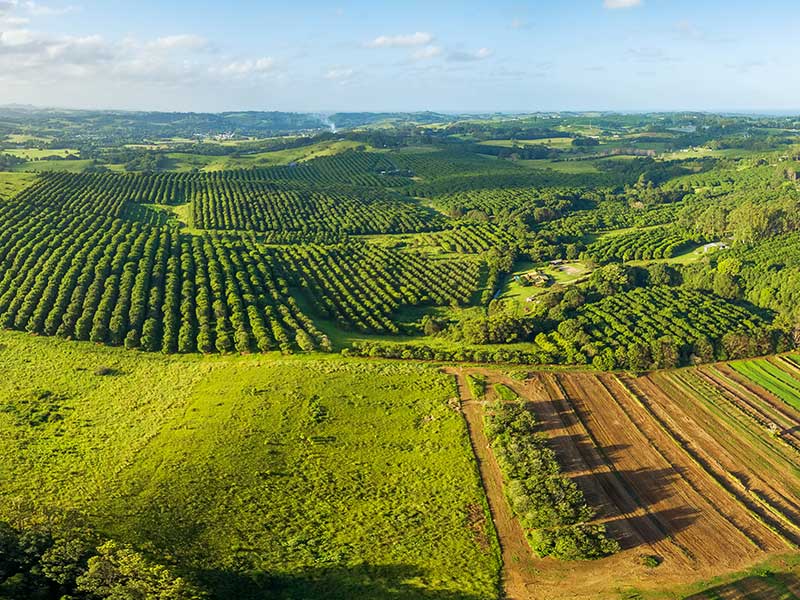The 2021 Regional Telecommunications Review (RTR) Report that was tabled in Parliament last week has missed an opportunity to highlight the despair and frustration felt by many living in regional and remote Australia.
There is no clear national plan to provide Australians living outside major cities with reliable and effective telecommunications, and this is central to the growing anger in the bush at the lack of timely and effective resolution to the many issues raised by the more than 600 submissions made to the inquiry.
At the heart of the problem is a lack of leadership by government, and a failure to listen to those that demand improved telecommunications in regional and remote areas.
There were 12 recommendations made in the 2021 RTR report, and none of the recommendations are a surprise. Nearly all of the recommendations made in the past three RTR reports were included again. What this means is that no progress has been made by government to address the major issues.

The first recommendation is a no-brainer but does not go far enough. It calls for “a long-term investment and planning framework for digital infrastructure and regional digital capability” and “increased coordination and investment between the Australian, state and territory governments and other relevant sectors to address connectivity in the regions.”
A good start would be a webpage on the department’s website that lists the recommendations from the past four RTR reviews, and what has been done to address each recommendation and the percentage complete.
The second recommendation is an omnibus about access and how it should be funded, coordinated and provided to support the digital economy, regionalism and social inclusion.
Access is one of the three pillars of telecommunications, the other two are cost and data throughput or capacity.
A key aspect issue for telecommunications take-up is the cost of connecting to the network, a cost that is not regulated, and the cost of transit, which in some areas is regulated but remains expensive.
Many small businesses and farmers are unable to justify improving their use of telecommunications because of the high connection and transit costs.
Resilience is a key factor that is targeted in Recommendation Three, with a call for the government to establish “to a substantial Regional Telecommunications Resilience Fund, targeted towards initiatives to improve emergency and network resilience across vulnerable communities.”
Improving resilience should not be seen to be a mechanism to increase handouts to the telecommunication industry, and it is vital that the performance of any funded resilience initiatives be defined and independently verified annually.
Telecommunications technologies continue to evolve, and new capabilities are being introduced globally, including the low earth orbit satellite constellations.
Recommendation Four calls for “the government fund innovation trials to validate the value and reliability of new technology solutions able to address broadband and mobile coverage across regional, rural and remote Australia.”
Whilst the access and monthly plan charges for the new satellite services are high now, it is anticipated that they may reduce over time as customer take-up increases.
It is vital that new entrants to the Australian telecommunications market contribute to the Universal Service Obligation levy and to the provision of the National Broadband Network (NBN) in regional and remote Australia.
A major problem for the Australian government and the telecommunications industry, will be whether the government permits the multi-national satellite operators to push credit card transactions offshore, and to declare no income in Australia thereby reducing taxation obligations to nil.
Whilst this may appear to be a problem for the government, it is actually a fundamental problem for the existing participants in the Australian telecommunications industry because the satellite operators will have an unfair cost advantage.
Consumer education is key to ensuring that everyone is able to benefit from the provision of digital services, particularly those related to education, health and government digital services.
Recommendation Five calls for the government to continue “to commit to the provision of accessible and independent information for regional consumers, business and local government.”
The NBN remains a contentious issue as the government business enterprise providing the NBN burns cash at an alarming rate whilst delivering a second -ate service to a majority of Australians.
To put it mildly, Australia will never be a leading participant in the global digital economy until there is a major change in direction at NBN Co and this will only occur when the current government decides to take full responsibility for the NBN debacle and to fix it.
Recommendation Six calls for the NBN fixed wireless footprint to be further extended into regional areas and for the throughput to be improved.
Currently, consumers on the fixed wireless footprint are receiving a woefully inadequate connection to the NBN, and the RTR report calls for “faster network speeds and minimize network congestion by:
• strengthening the network to make more bandwidth available to users; and
• extending the reach of the network into areas currently serviced by Sky Muster satellite.”
Network performance, reliability and resiliency go hand in hand. A key requirement for consumers is visibility, yet the information about performance, reliability and resiliency is very hard to find on carrier websites and often only made available at a major inquiry.
Recommendation Seven is vital if we’re going to see the industry become customer focused. The recommendation calls for government to develop and enforce “minimum wholesale and retail service, performance and reliability standards appropriate for each service type (fixed and landline, mobile, fixed wireless, satellites).”
If you’re standing on a street 500 metres from and with clear sight of a mobile tower on a sunny day you might expect to get the same performance and throughput irrespective of where you’re standing in Australia.
But this is not the case, and in regional and remote Australia submissions to the inquiry highlight the lack of performance and throughput even when 4 or 5 bars of 3G or 4G shows on mobile phones.
For Recommendation Seven to be enforced it will be necessary for government to put an annual performance monitoring program in place, like the Monitoring Broadband Australian (MBA) program overseen by the Australian Competition and Consumer Commission (ACCC) that monitors the NBN.
A key weakness with the MBA program is that information about NBN performance is limited and it does not appear possible to drill down to find out what the NBN performance is in a regional town or centre. Whilst this program has benefited consumers, it remains weak overall.
Several calls on government to fund a pilot mobile performance study in regional and remote Australia over the past three years have not been responded to.
Recently, the auDA Foundation provided a small grant for a mobile performance study in first nations towns and communities in WA and this is currently underway. A blog can be found on Facebook if you search for “rmpswa.”
The Universal Service Obligation (USO) remains a target for the telecommunications industry as the government contracted Telstra to provide the USO until 2032.
The USO levy is often derided as a handout to Telstra and queries about visibility regarding the funding and how it is used persist.
Recommendation Eight calls for the USO/USG to be reformed to “allow for a technology agnostic approach to USO service delivery, providing it exceeds the existing reliability standards of the current solution.”
Whilst the USO/USG arrangements may come in for criticism, it is far too early to talk about replacing the USO with a technology agnostic approach whilst the telecommunications industry fights to prevent minimum performance standards being introduced.
In regional and remote Australia, the first things that needs to be fixed are performance (reliability) and throughput or capacity.
The crux of telecommunications problems for people in regional and remote Australia is the focus of Recommendation Nine.
The committee recommended that the “government ensures measures are undertaken to increase the accuracy and transparency of mobile network quality and coverage information, including network congestion. This includes measures to collect and standardise mobile network coverage information and develop a tool to empower consumers to compare network performance and service availability.”
This is an ongoing and perennial problem that government needs to address urgently.
Sharing infrastructure is a no-brainer, especially as a way for the telcommunications carriers to reduce costs.
Over the past two decades the ability for carriers to over-charge for access to infrastructure has been whittled away by the ACCC and government regulation.
But this process has been slow and at times hindered by the apparent ideology of the ACCC that infrastructure competition is more important that ensuring people in regional and remote Australia can access all carriers at reasonable cost.
Recommendation Ten calls for shared network access, specifically “that preference is given to Government funded mobile infrastructure providing shared network access.”
For this to occur, domestic mobile roaming in regional and remote areas is a logical and pragmatic approach, particularly as this reduces the cost of infrastructure and ensures that consumers benefit by gaining access to all carriers.
This approach should be introduced as a requirement for all infrastructure funded through mobile black spot programs over the past two decades.
Several years ago, the ACCC decided to not declare domestic mobile roaming, and the need for this to occur, in emergencies, was as one of the 2021 RTR recommendations.
Whilst it is possible to make emergency calls on other networks, people living in regional and remote areas cannot wait weeks or months for their service to be restored after an outage and this is a common occurrence in the bush.
The reasons provided by the ACCC for not declaring domestic mobile roaming in regional Australia have been found, over several years, to have no foundation. I’ve written about the this, contacted the ACCC and asked for a declaration of domestic mobile roaming to occur and still the ACCC refuses to revisit this decision, and people living in regional and remote areas suffer as a result.
Indigenous communities should be provided with a high priority for significantly improved access to highly reliable low cost or no cost telecommunications and broadband that has appropriate minimum performance requirements.
Recommendation 11 “recommends that in consultation with Indigenous organisations and communities, the government continues to focus on needs of Indigenous Australians living in regional, rural and remote areas surrounding access, affordability and digital ability.”
This should be a national priority, and over the next three years, it should be possible to provide indigenous communities with a life-changing improvement in the ability to access and utilise telecommunications for every aspect of life and to promote participation in the digital economy, and to provide health, education and access to government digital services.
In 2015, I published a paper on “the rationale for universal access to digital services” arguing that there is a need for very lo- cost broadband and no data charges for people of lower socio-economic means.
The 2021 RTR Report addresses this vital issue is address in recommendation 12: “The Committee recommends the removal of data charges for low income and income support recipient consumers in regional, rural and remote Australia accessing all Australian, state and territory government services, to improve the affordability of telecommunications for these users.”
Telecommunications is an essential service. Government should take a step back and realise that the 2021 RTR report highlights there is a need for a change in direction within government to how telecommunications is addressed.
Mark Gregory is an Associate Professor in the School of Engineering at RMIT University
Do you know more? Contact James Riley via Email.

